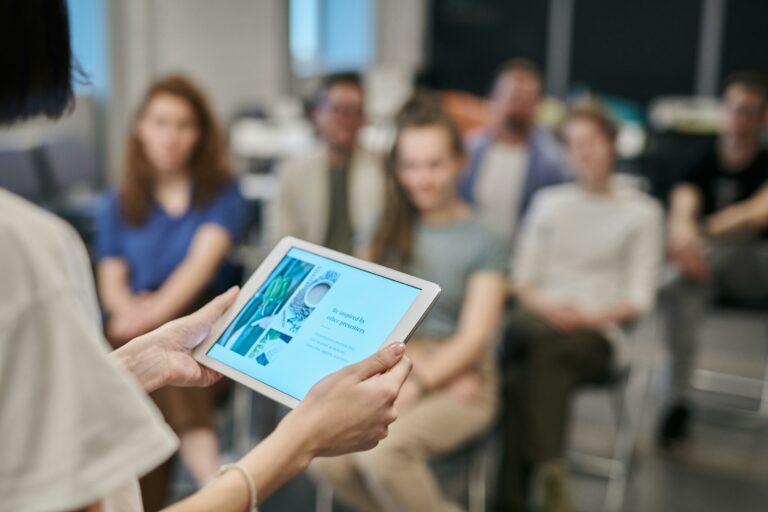
According to the Higher Education Statistics Agency, nearly one in five UK students reported having a disability in 2022 – a number that is likely underreported, as many students choose not to disclose their disabilities.
While accessibility measures like wheelchair ramps and braille signage are easily recognised and tangible, the rise of digital learning has introduced new, not so apparent, barriers to education. As more courses move online, digital accessibility is just as critical to providing equal opportunities for students to succeed. Even well-intentioned creative enhancements designed to ‘liven up’ a course can unintentionally hinder a student’s ability to engage with the content.
That’s why designing digital content, tools, and technologies with accessibility in mind is crucial. Accessibility is about creating better learning experiences for everyone. When digital content is built with accessibility in mind, it becomes more flexible, engaging, and effective for all learners, not just those with disabilities.
By embedding accessibility best practices into course design from the beginning, we can remove barriers and empower students and educators alike. Let’s explore how digital accessibility drives meaningful change and creates educational experiences where no learner is left behind.
The road to better content
Accessible content refers to digital or physical materials that are designed to be usable and understandable by all individuals. This includes making sure that content can be accessed, navigated, and interacted with by people with a variety of needs, such as those with visual, auditory, cognitive, and/or motor disabilities.
Designing for accessibility is a learned skill. Some educators aren’t experts in accessibility. And that’s ok. The key is for educators to recognise the importance of accessible content and take steps toward making their content more inclusive – even small changes can make a world of difference. With the right tools and a willingness to learn, anyone can begin to create more accessible, inclusive learning experiences. For example, educators can use accessibility checkers to scan their digital content for potential accessibility issues, some even offer suggestions for improvement.
Additionally, technology can provide institutions with valuable data to identify and address barriers to education. By analysing online content, educators can pinpoint which materials and courses need the most attention and implement targeted improvements.
A balanced, human-centred approach
While tools can assist with accessibility, they should not be relied upon as a one-size-fits-all solution. Context is crucial, and some solutions may provide false confidence in accessibility. For example, AI-generated image captions might fail to capture the instructional purpose behind an image, resulting in confusing descriptions for learners. Educators must assess whether suggested fixes are meaningful and contextually appropriate to create sustainable change and truly support student learning. The goal should be to build long-term expertise in creating accessible content.
By prioritising inclusive design, we can break down barriers and create a learning environment that works for everyone.
Ally, a tool we have developed here at Anthology, supports instructors when implementing accessibility fixes, allowing them to gain both confidence and expertise. The solution helps instructors create more accessible content by providing real-time feedback and guidance. By integrating tools like Ally into course design, accessible content becomes an ongoing practice rather than an afterthought.
Improved outcomes for all students
Accessibility presents an opportunity to enhance learning for everyone. Providing learners with choices in how they engage with course materials is key. It’s important to remember that what works for one individual may not be ideal for another. Learners should be able to adjust content formats and interfaces based on their needs, preferences, and environments.
Furthermore, accessibility features, such as clear layouts, voice controls, and adjustable font sizes, benefit everyone from learners to educators alike. Features like captions, transcripts, and adaptable formats help students study in ways that fit their needs – whether they’re reviewing materials on the go, learning in a second language, or simply adjusting text size on their mobile device for easier reading.
A learner can listen to course materials while commuting or multitasking. Meanwhile, captions and transcripts benefit students who are deaf or hard of hearing, non-native speakers, and those in either noisy or silent environments.Transcripts also allow learners to search for specific terms, revisit complex concepts, and create study guides. By prioritizing accessibility from the start, institutions can create more adaptable and user-friendly learning environments for all.
Learning without limits
By prioritising inclusive design, we can break down barriers and create a learning environment that works for everyone. Thoughtfully leveraged technology and a human-centred approach lead to more successful student outcomes. When content is more accessible, it empowers everyone to learn without limits.




